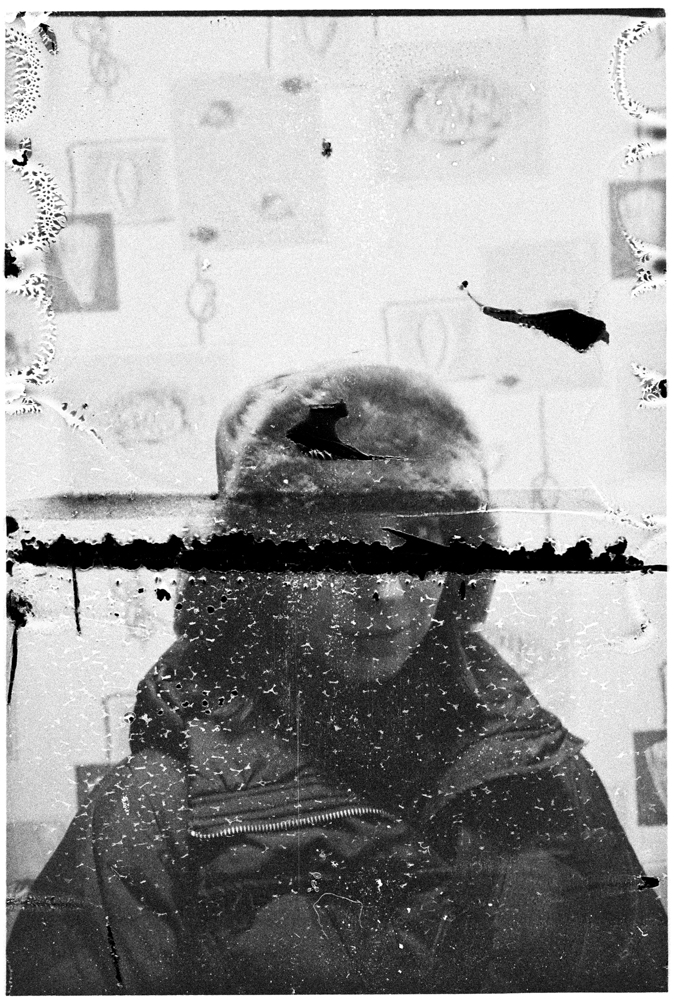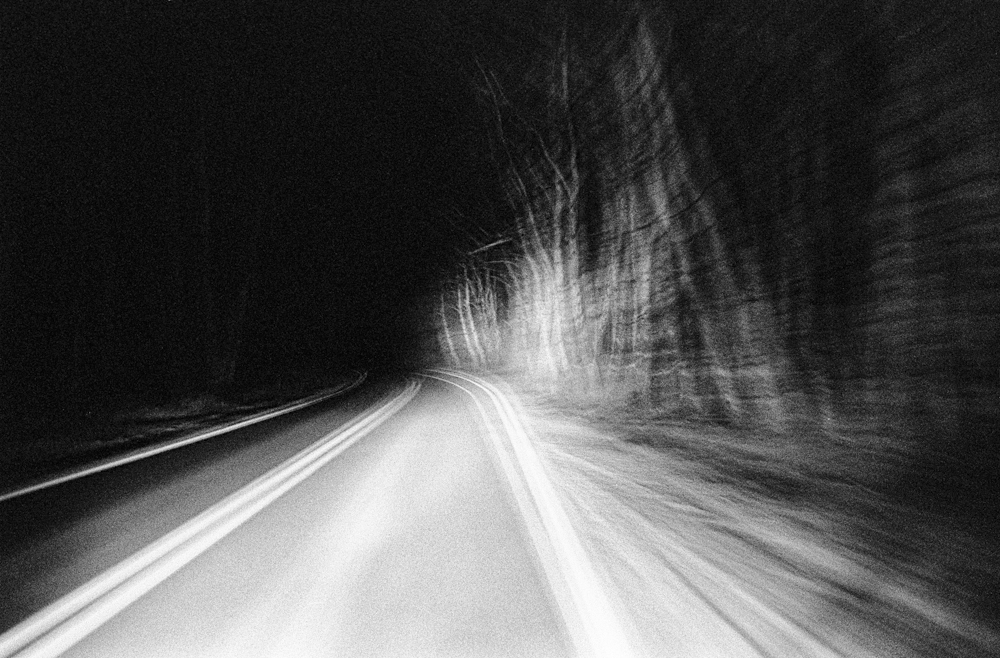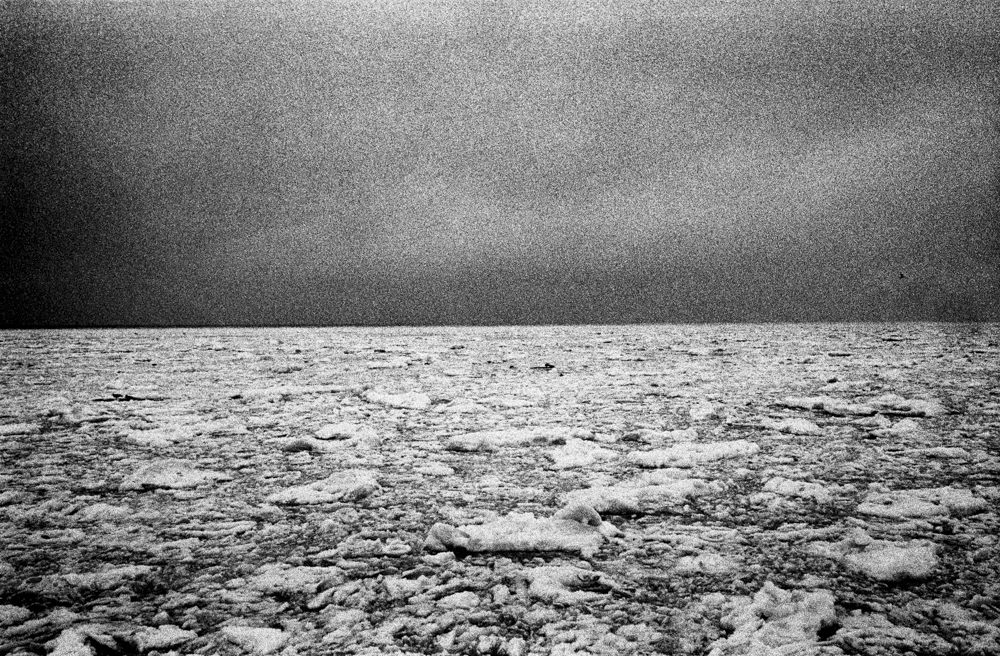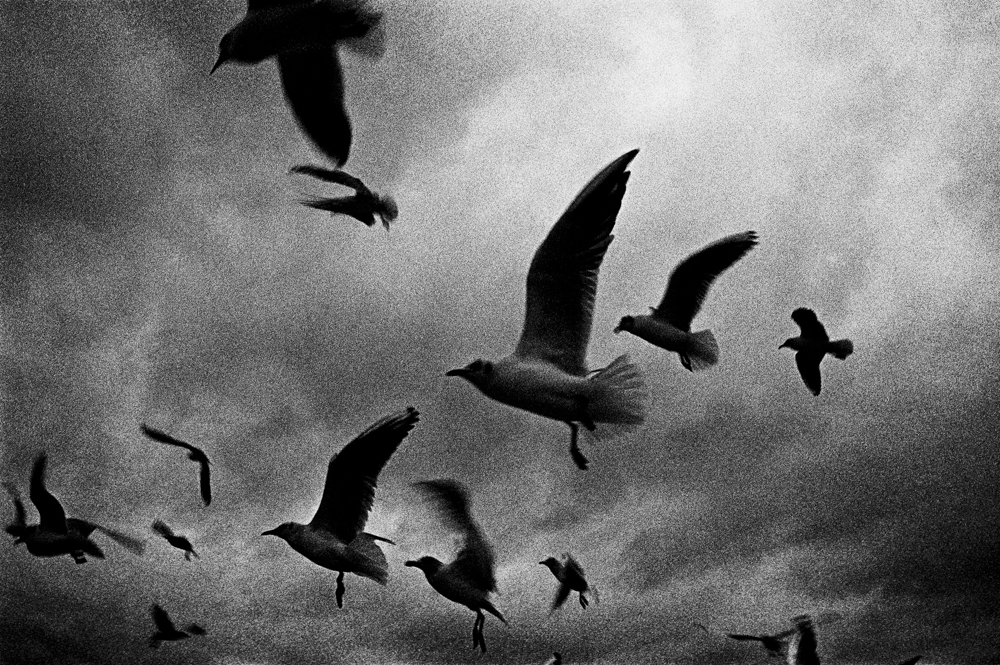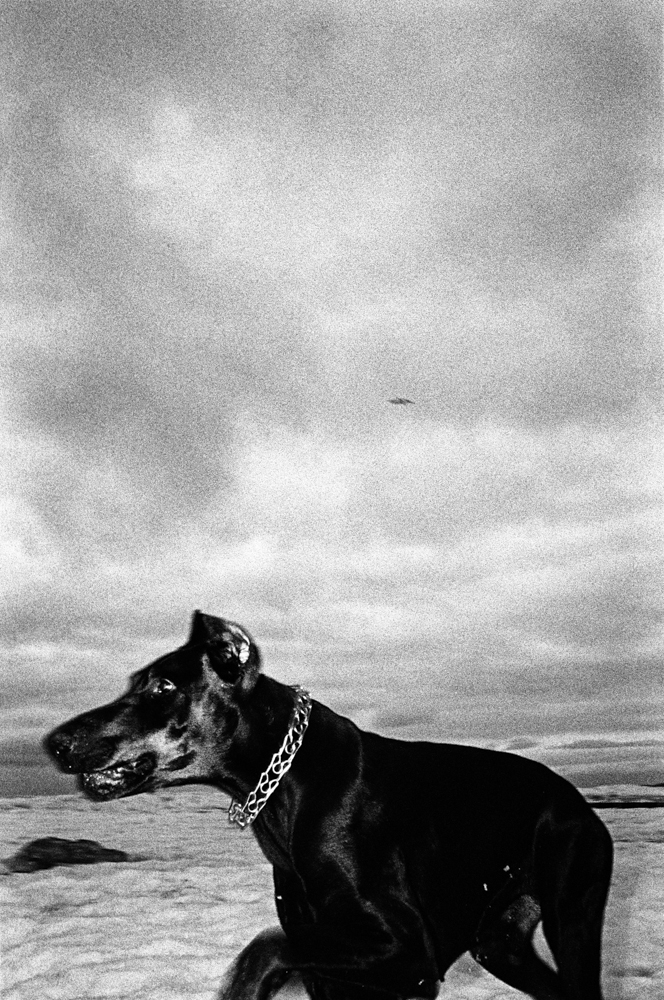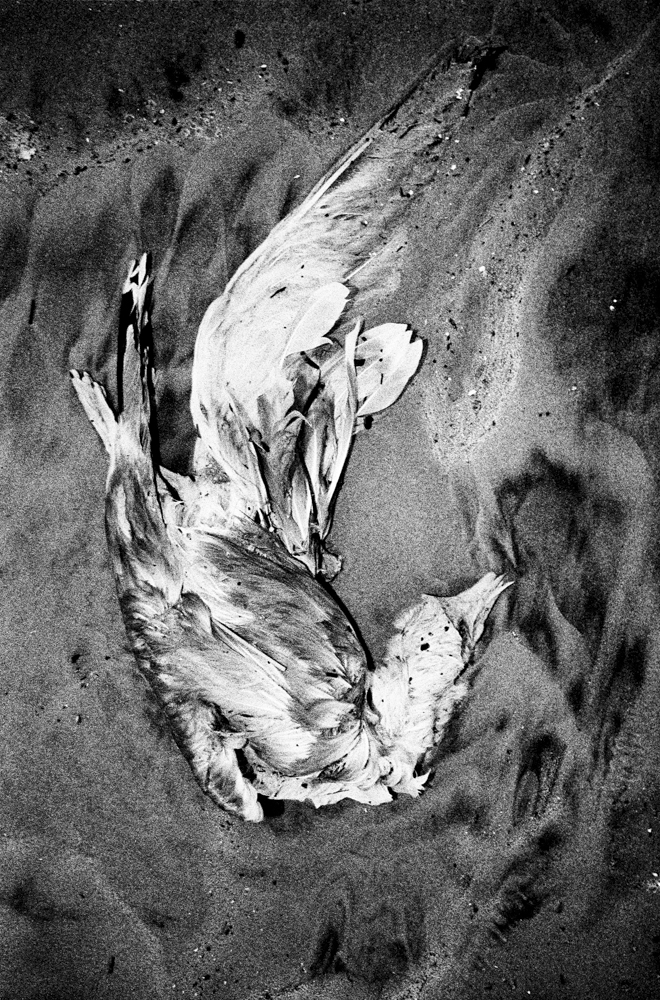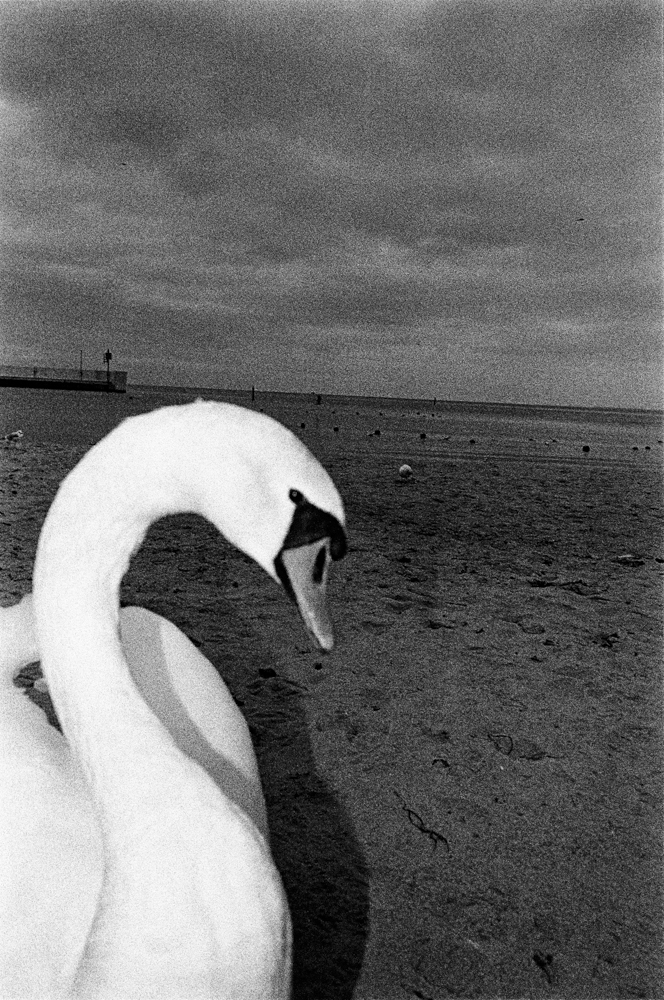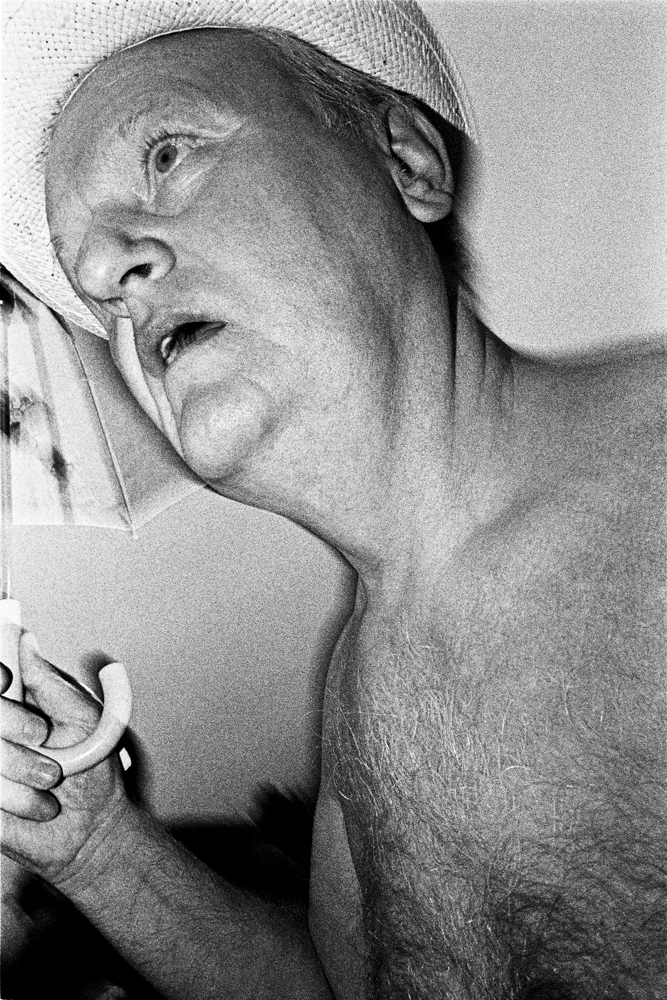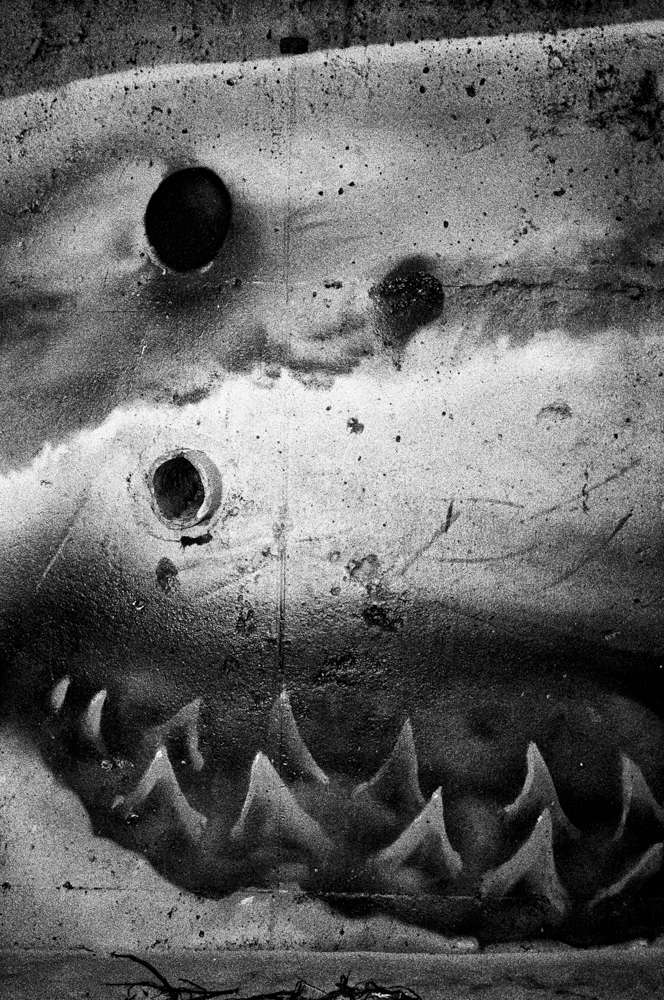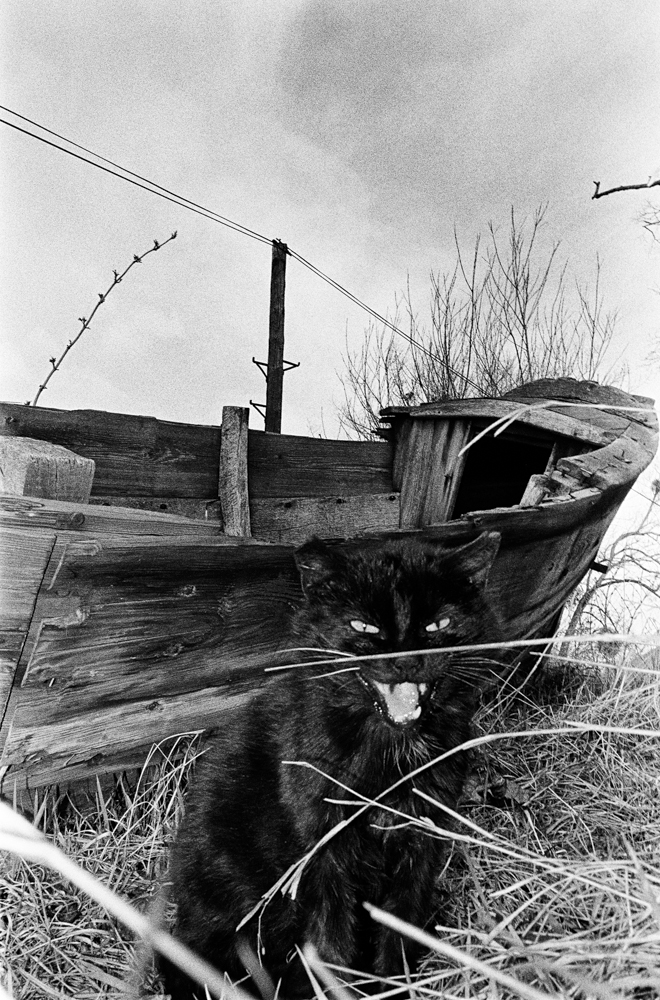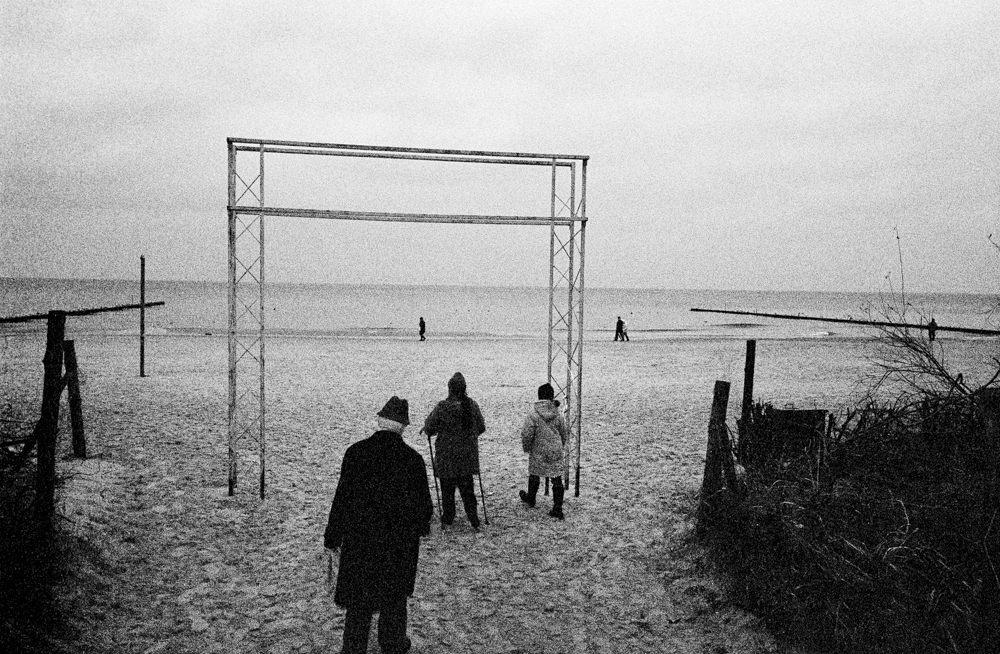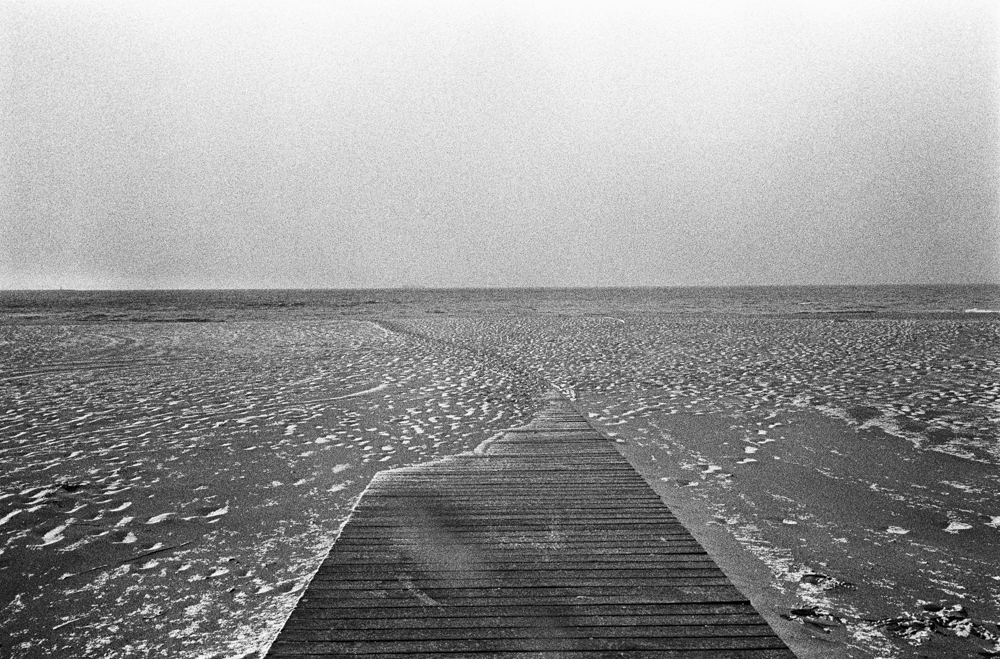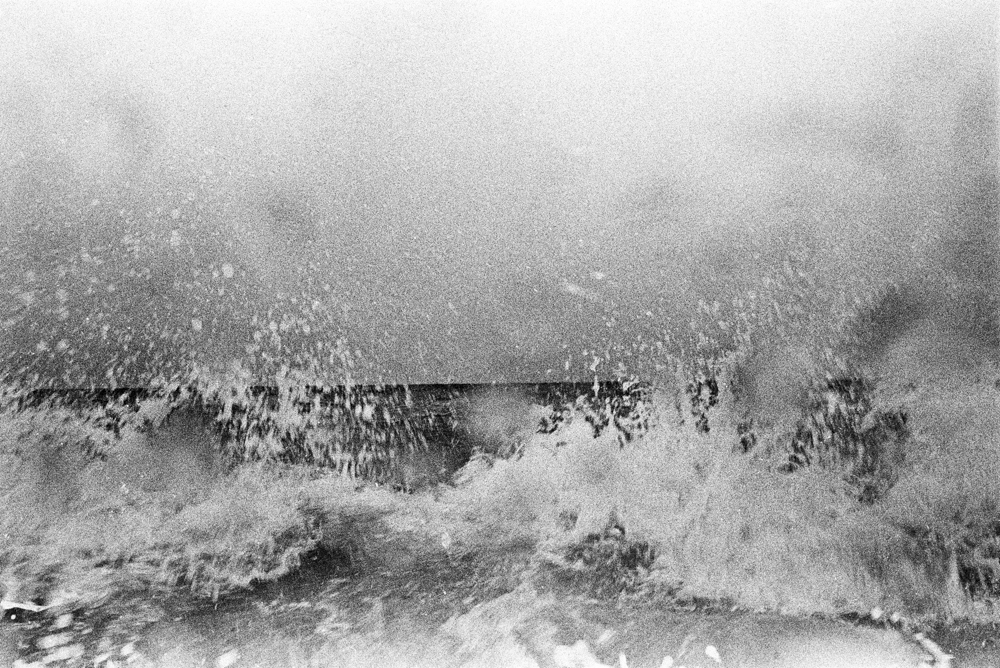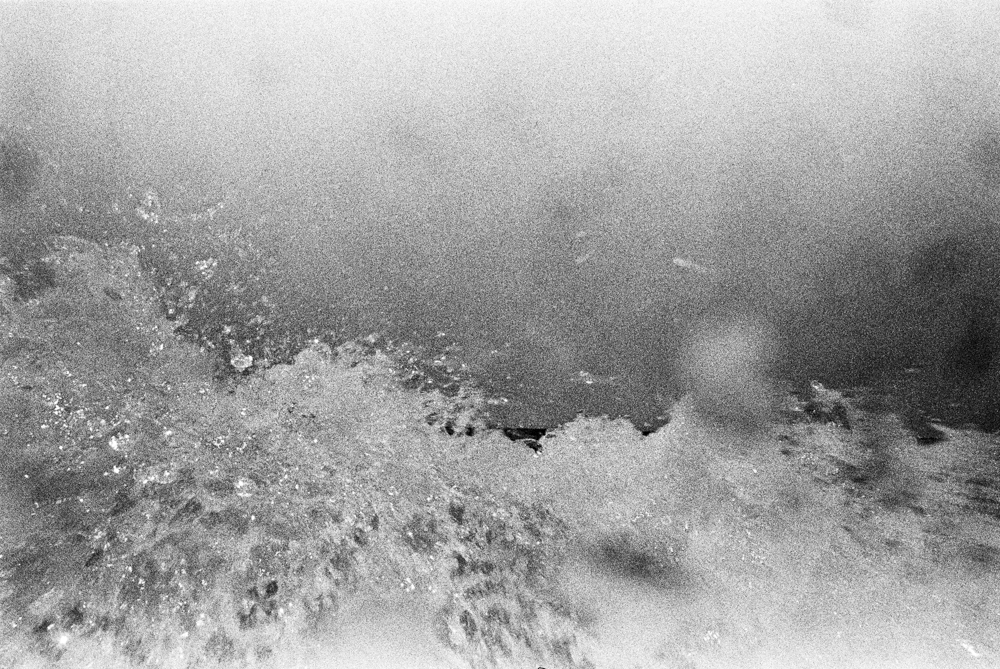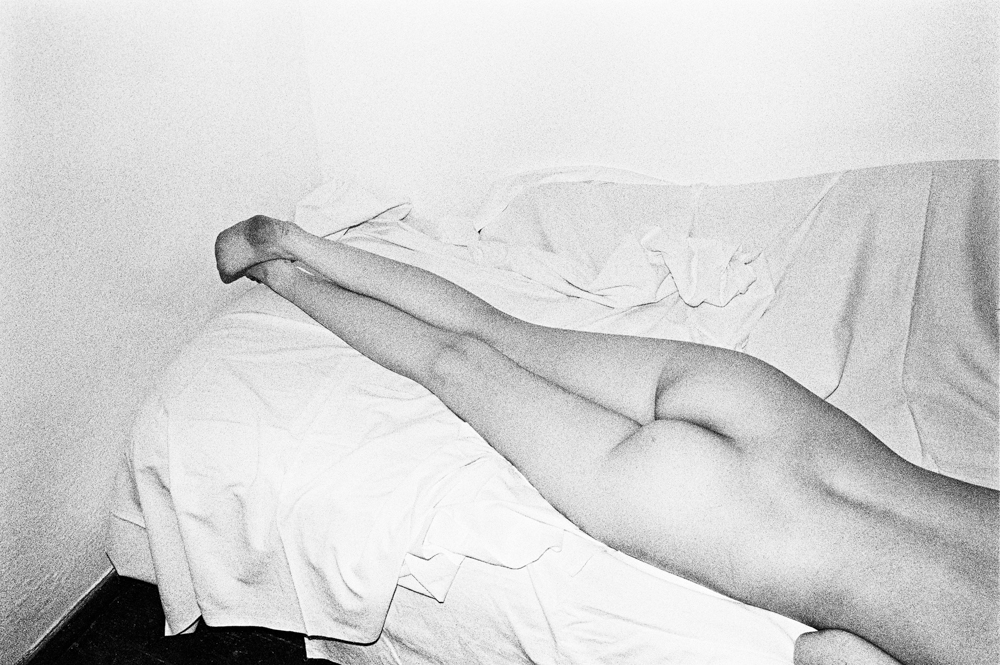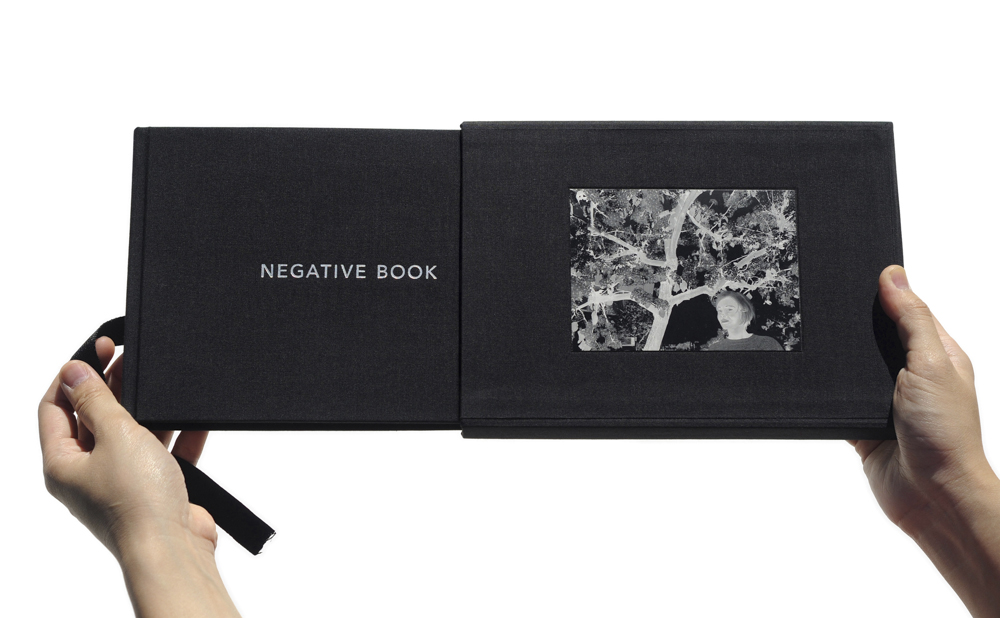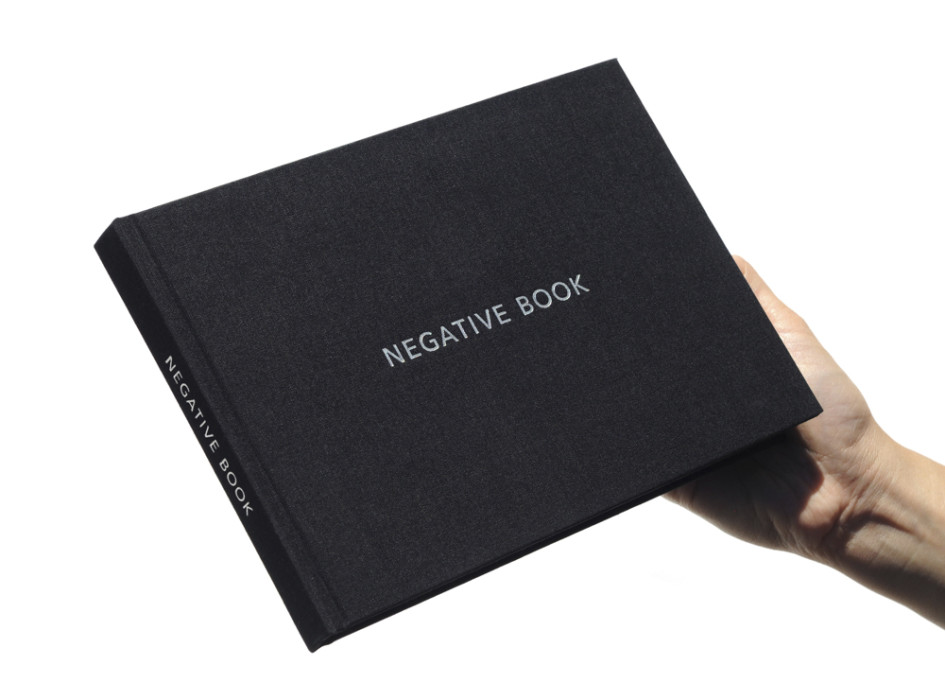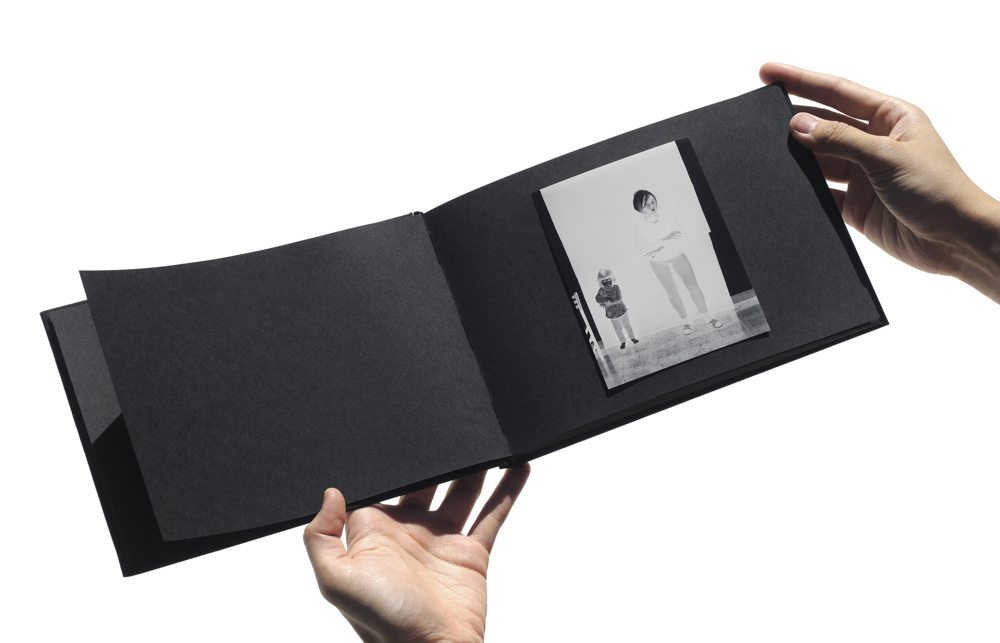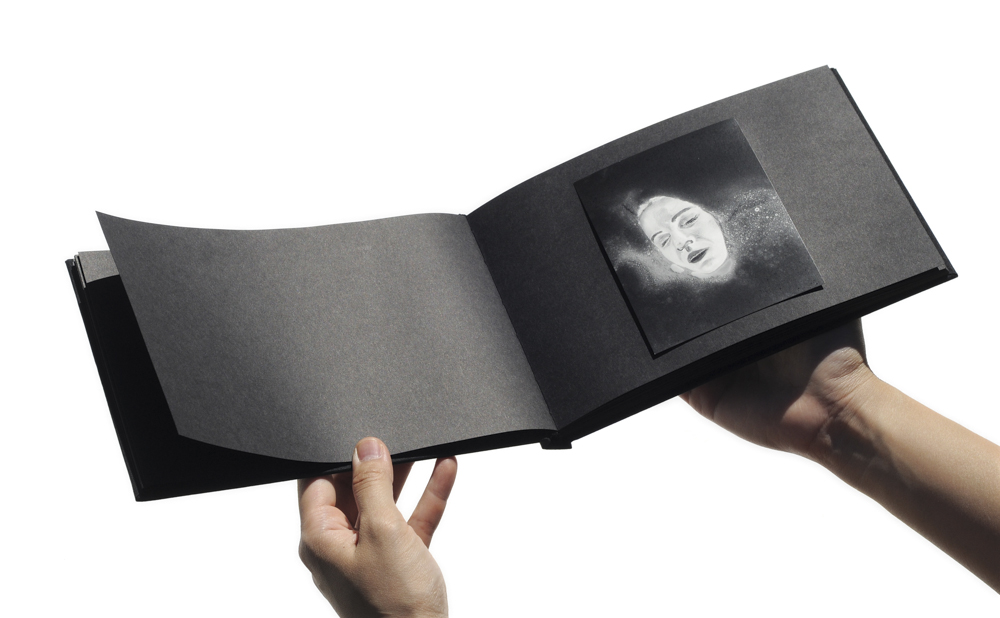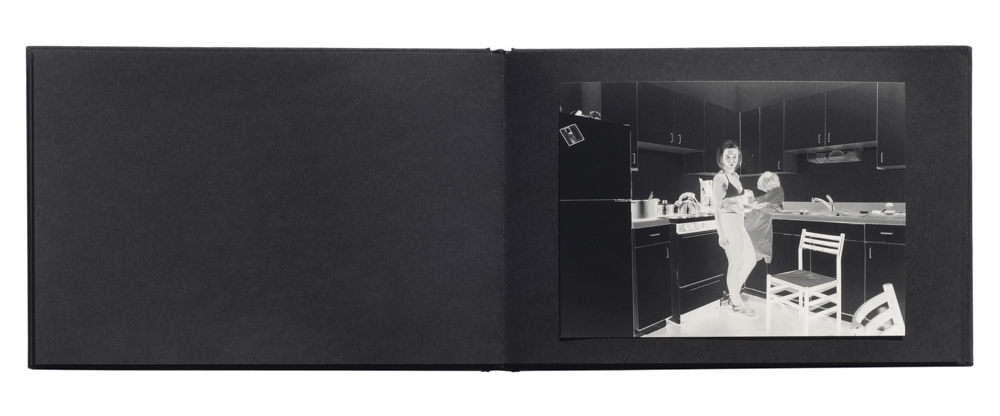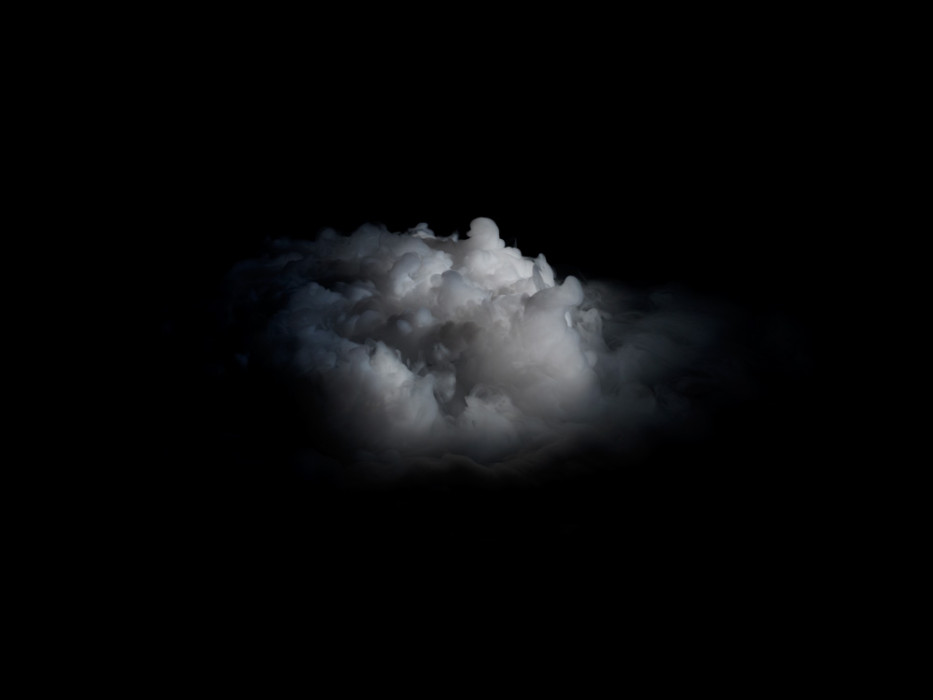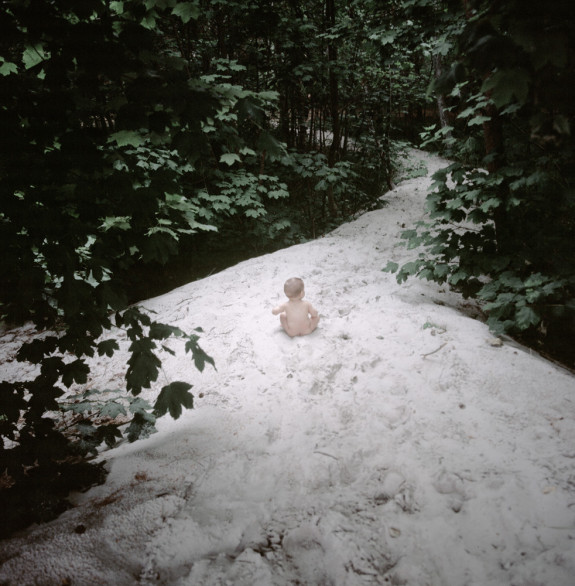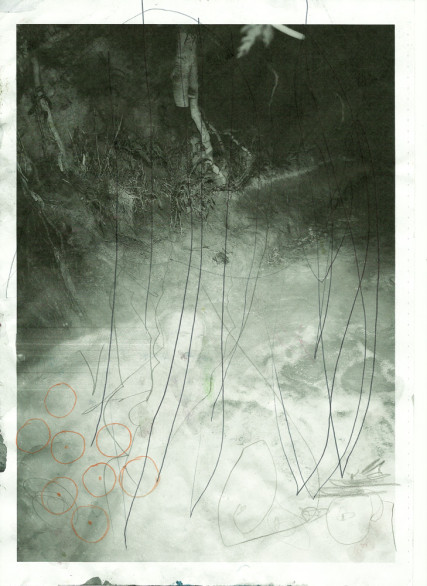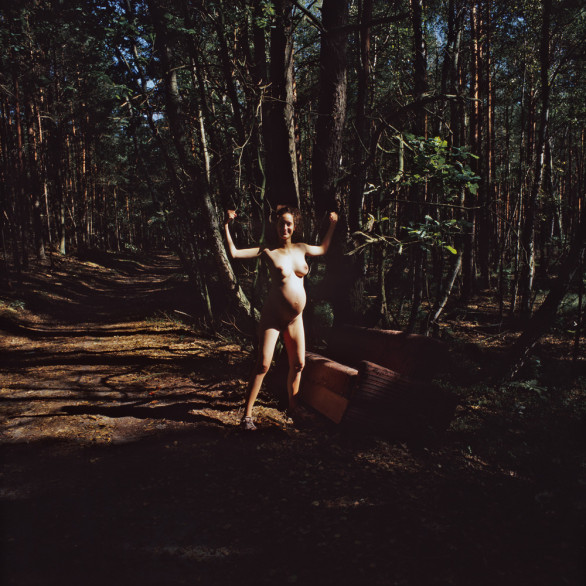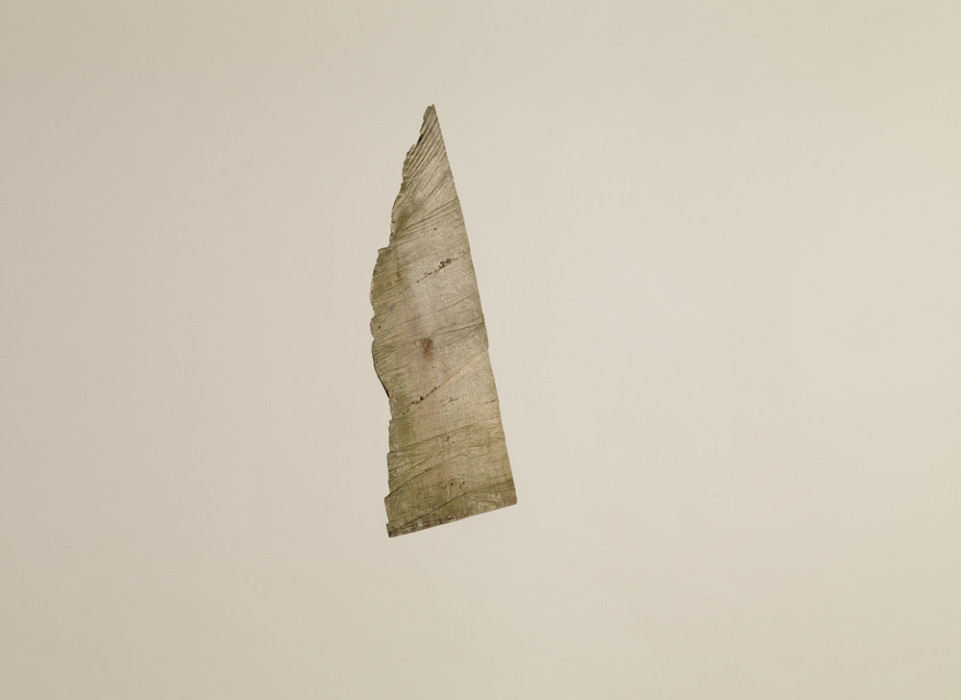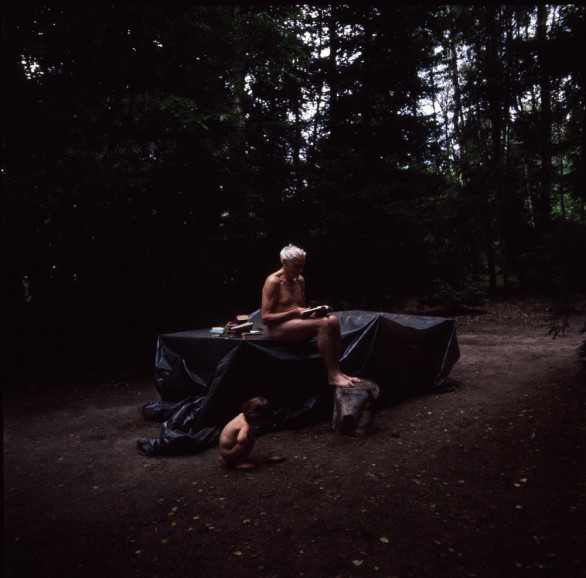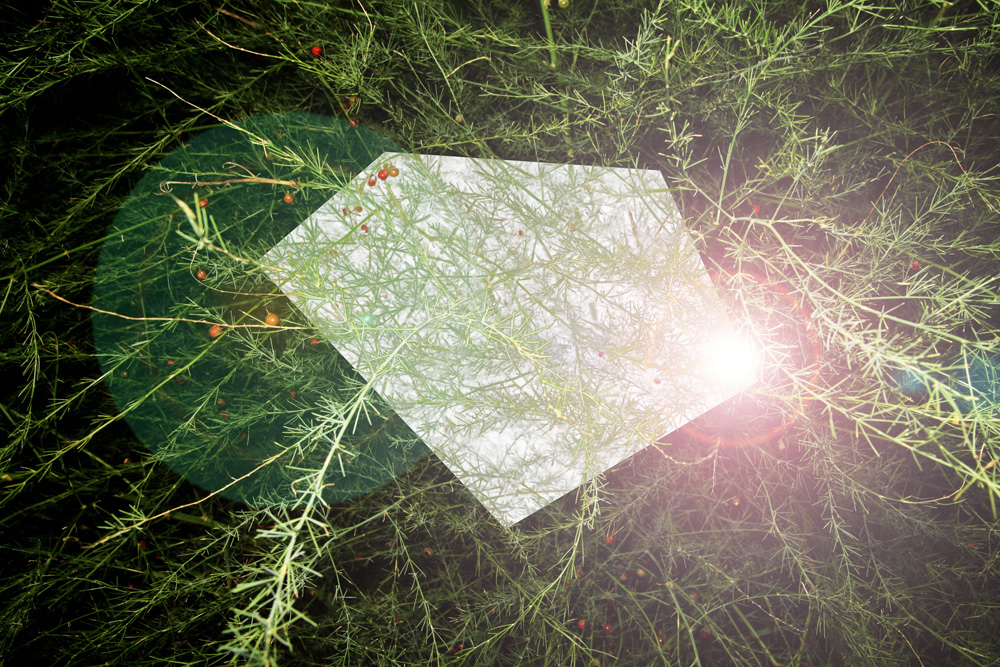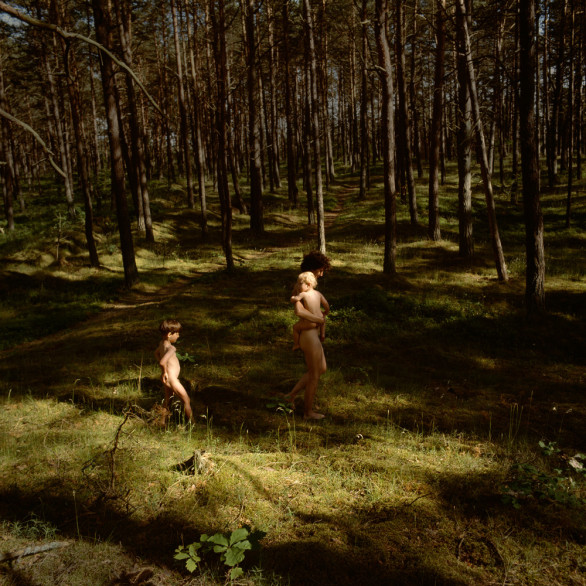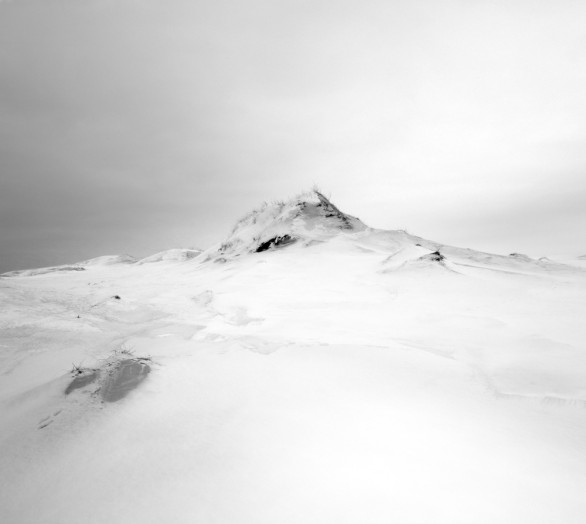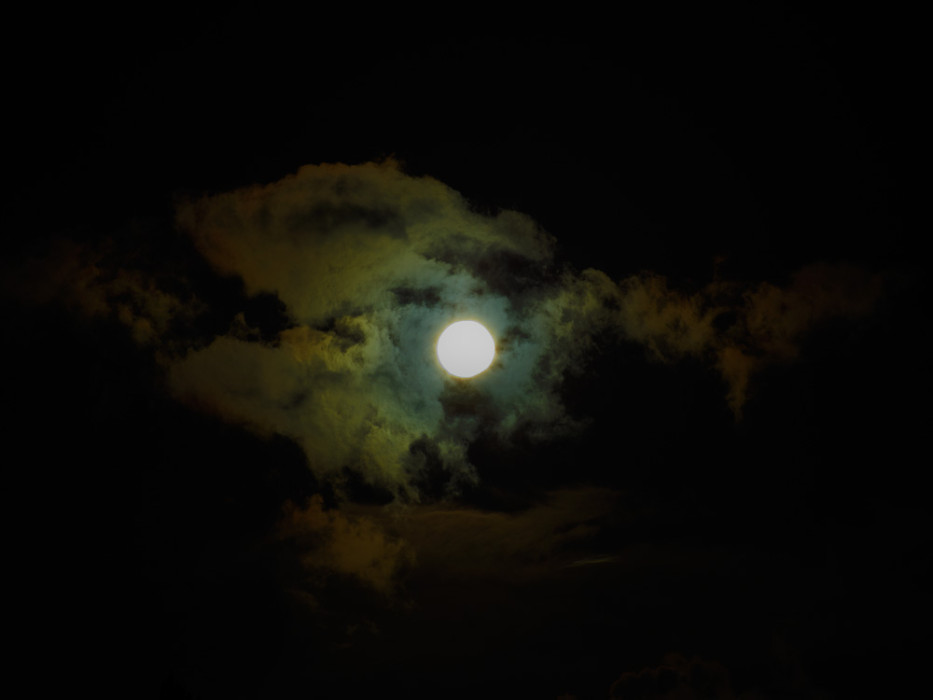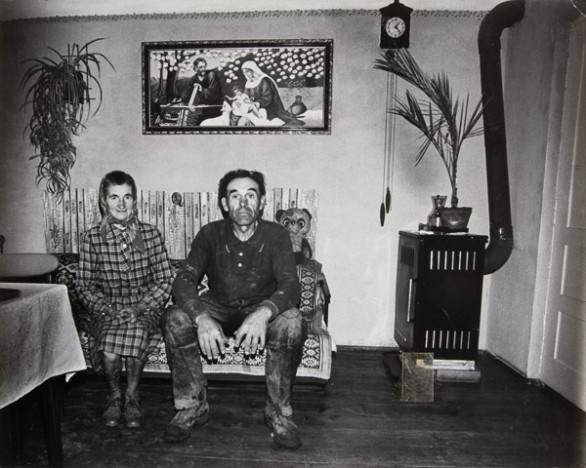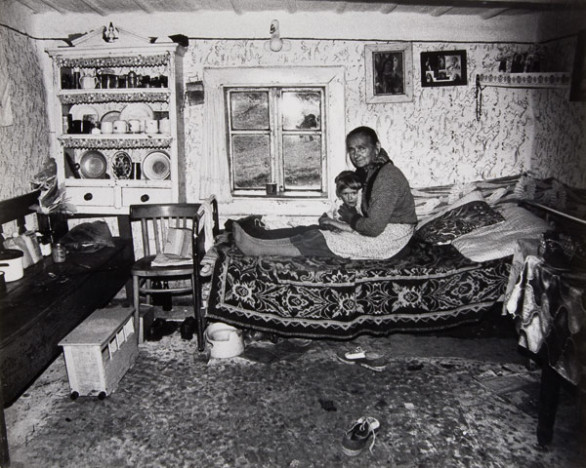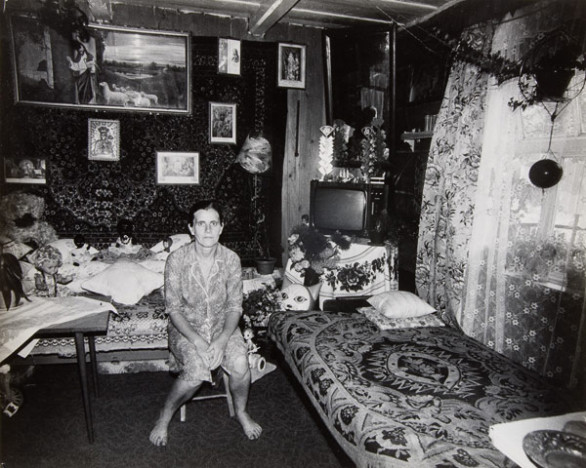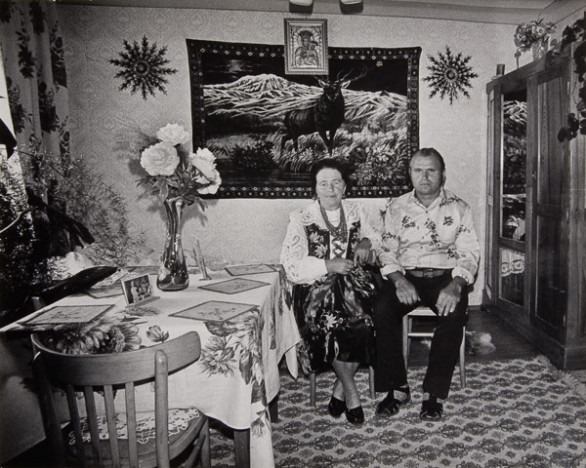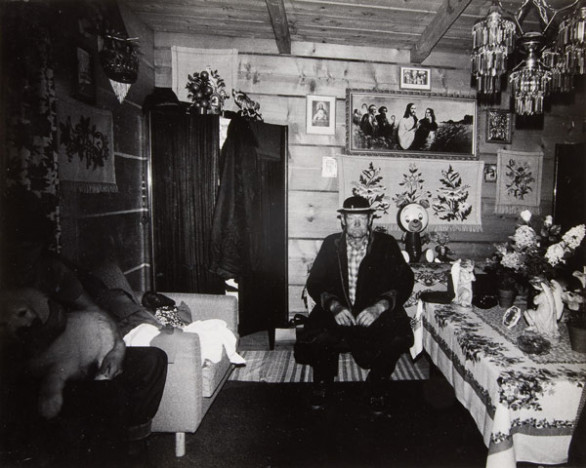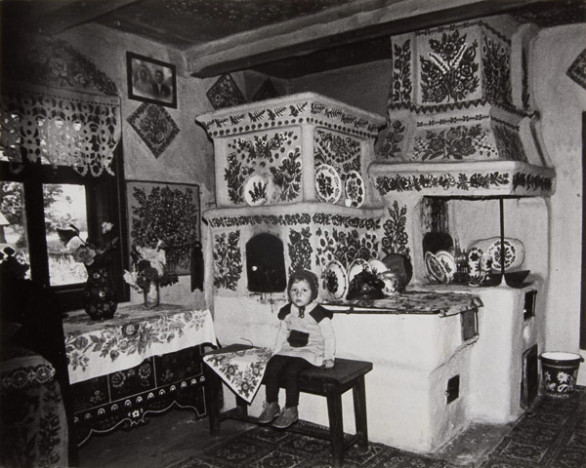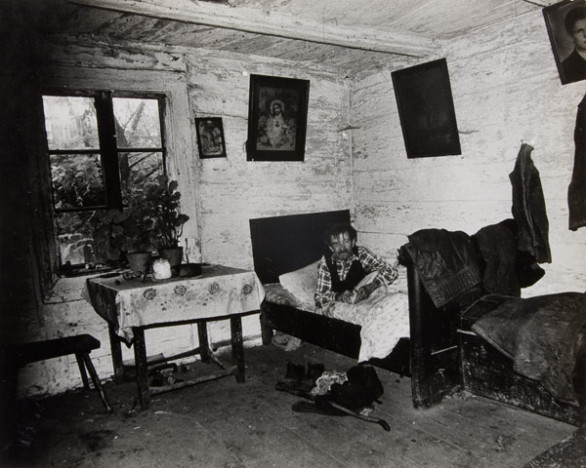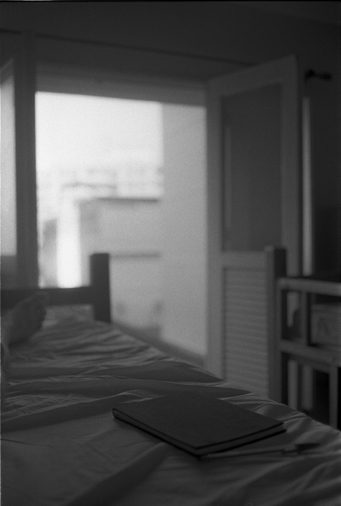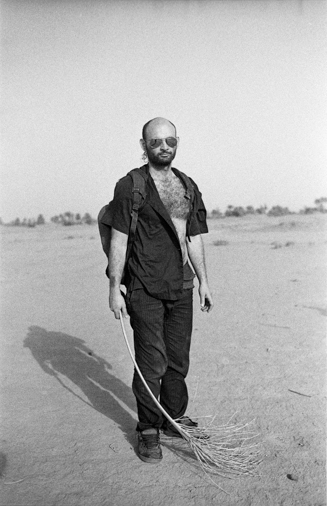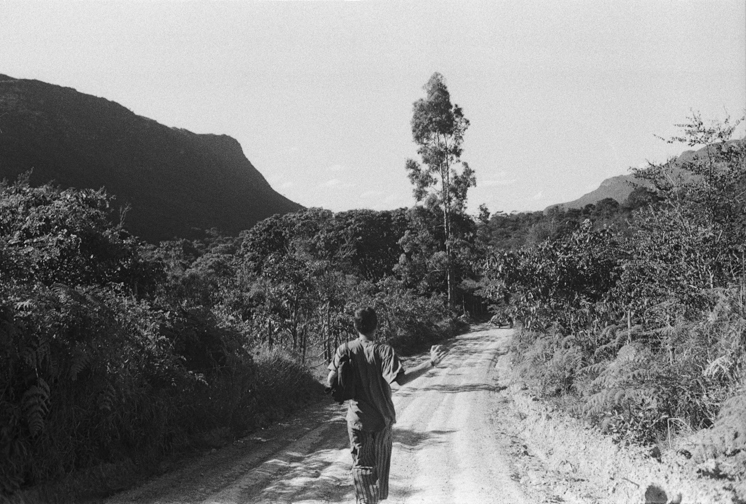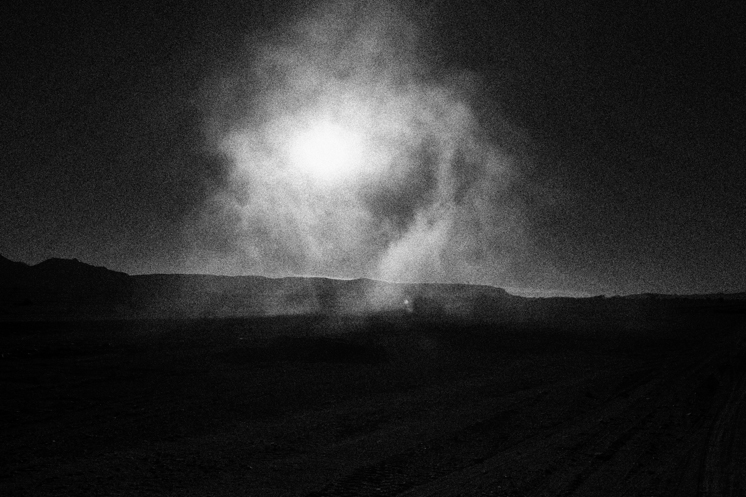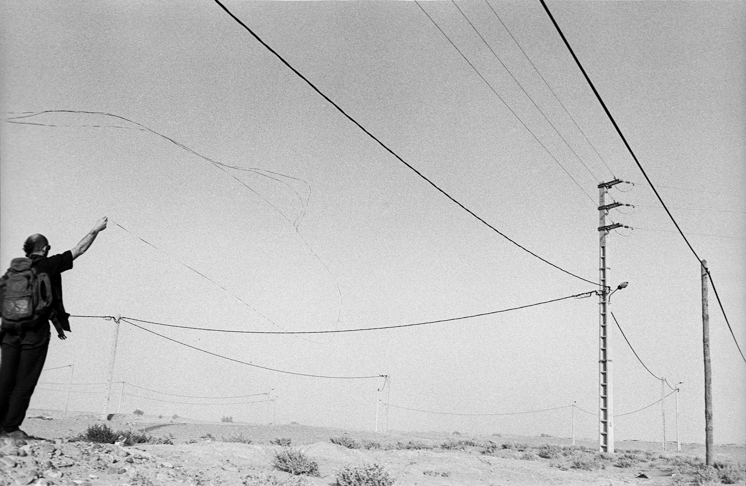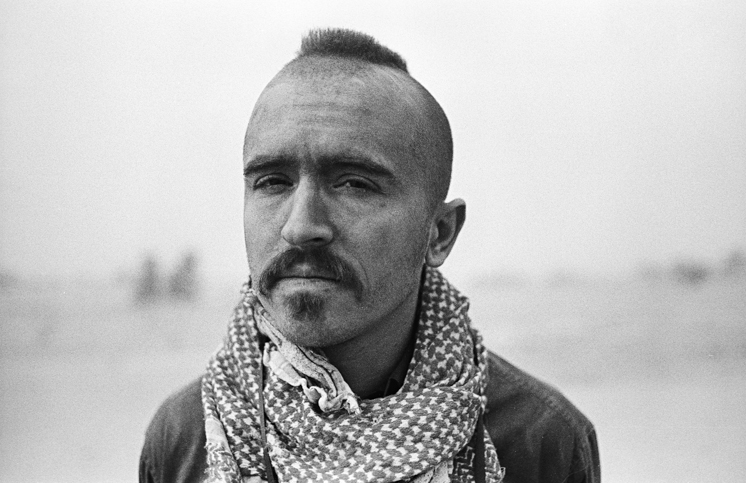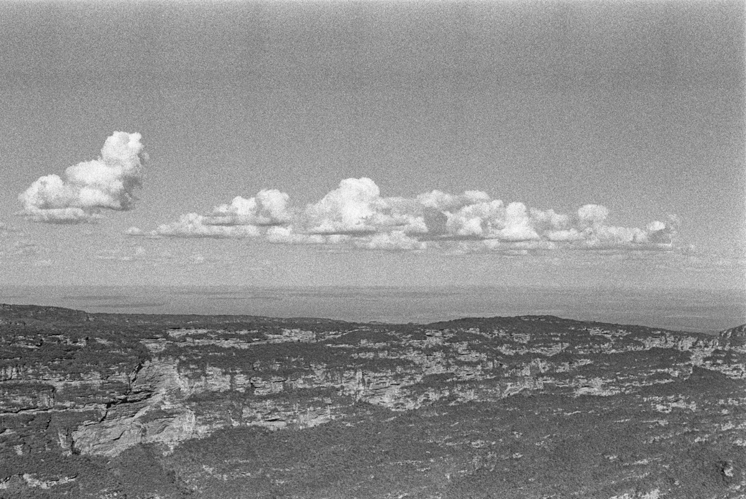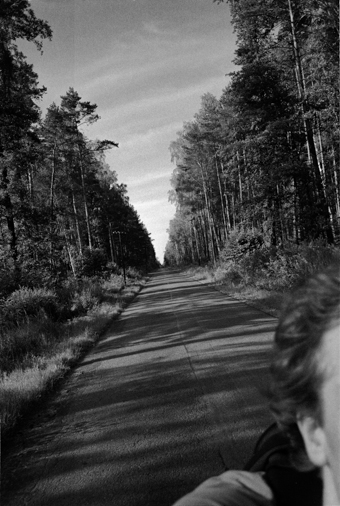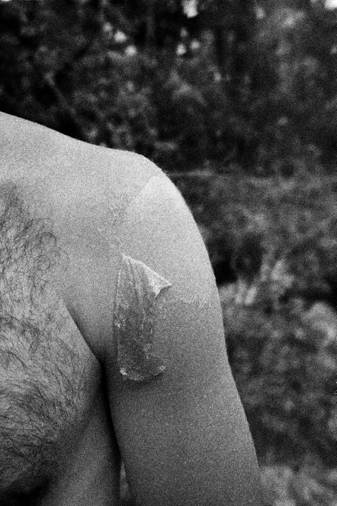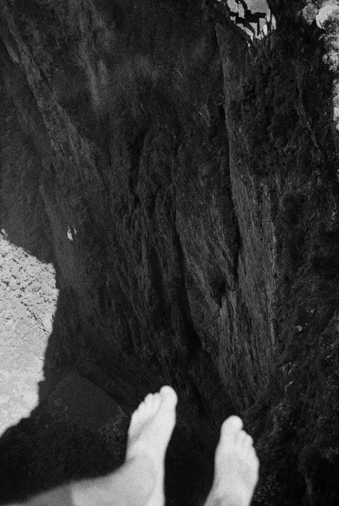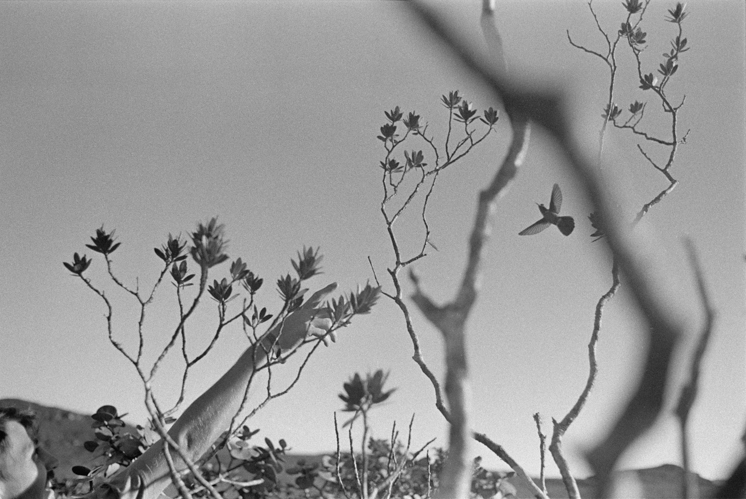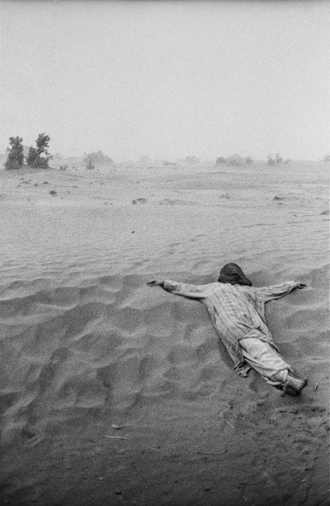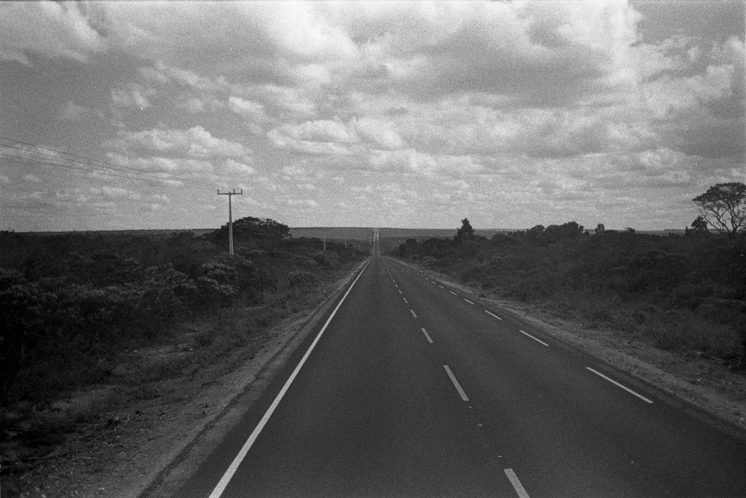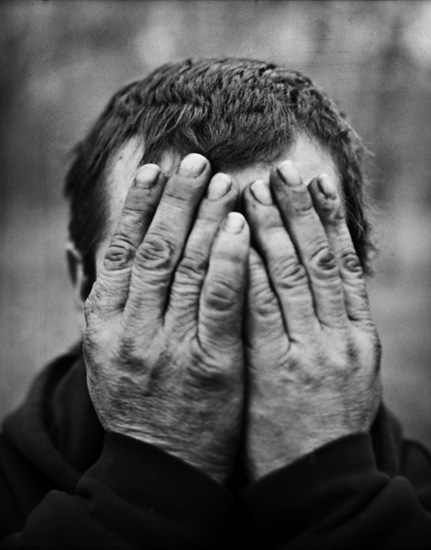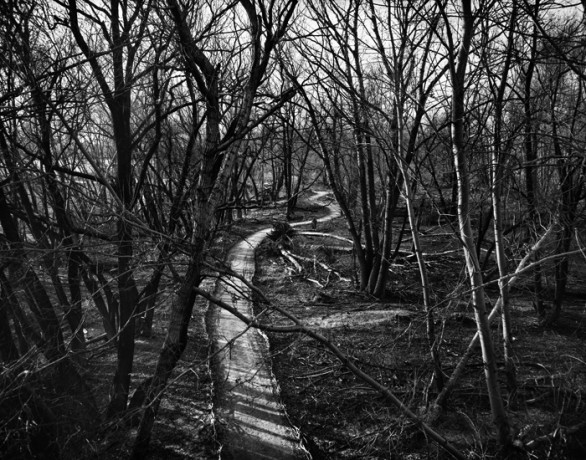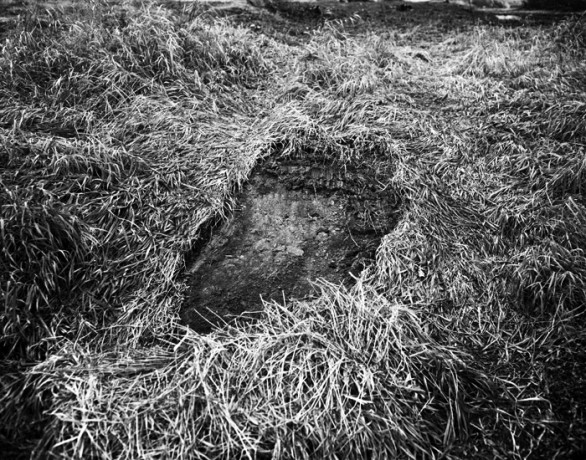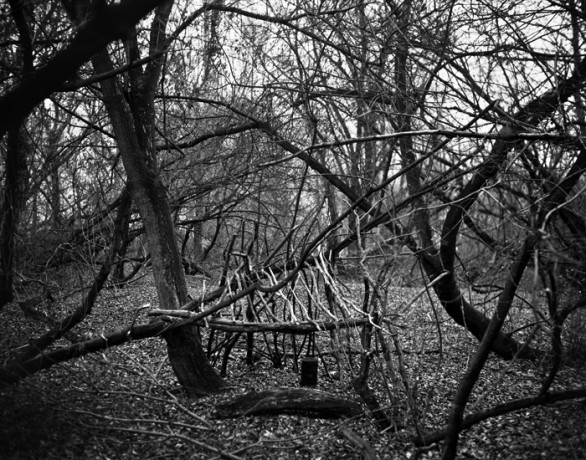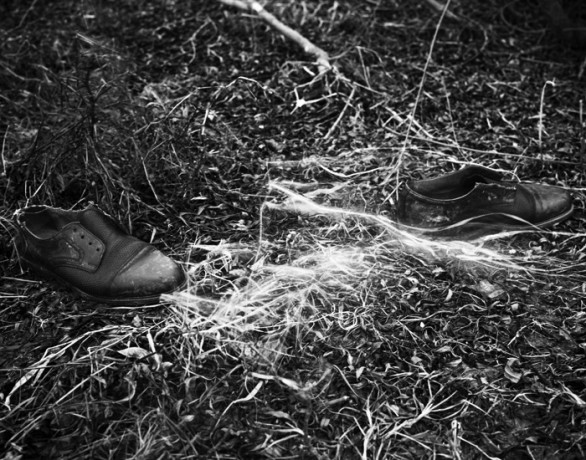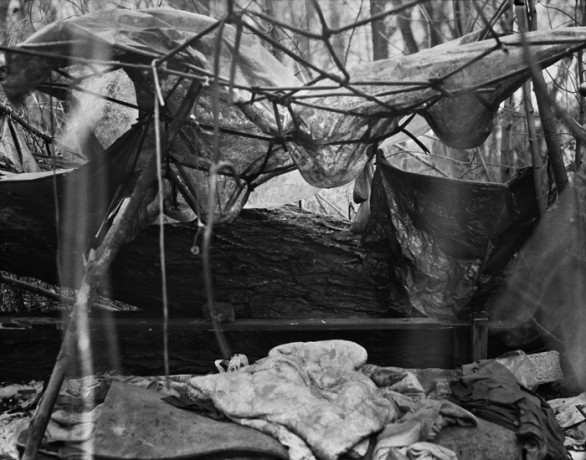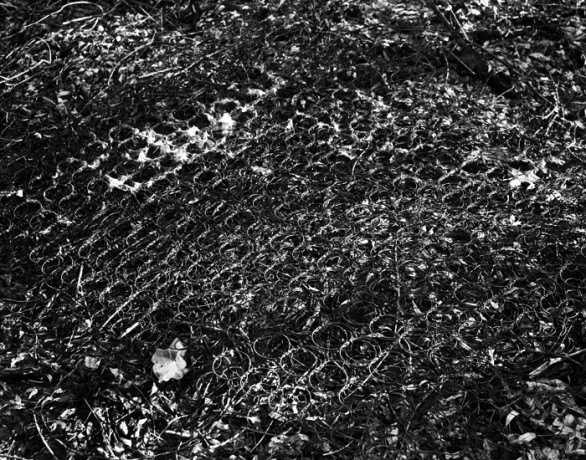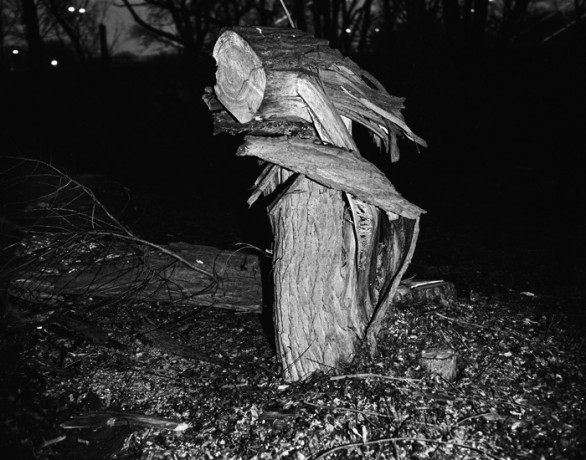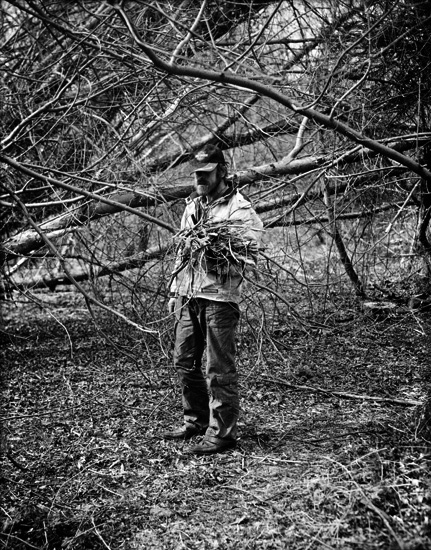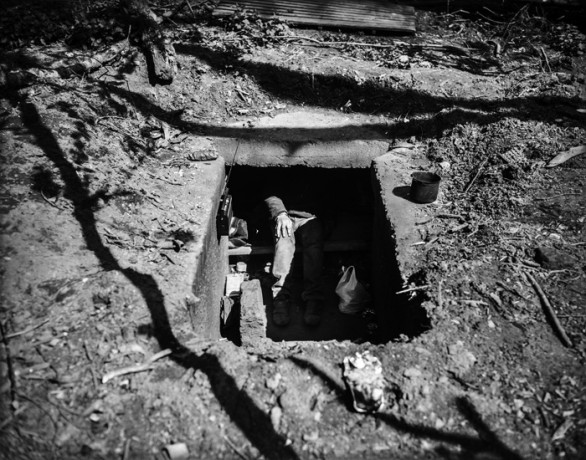Tatyana Palyga
Artist Feature
Every week an artist is featured whose single image was published by Der Greif. The Feature shows the image in the original context of the series.
Mateusz Sarello - »Swell«
Dec 04, 2013
Road. –– Winter. –– Void. Void of everything that is important. I am trying to think about the “road.” I cannot. I am completely exhausted. All in all, I am going only because of the weather. The prospect of wind, snow, and my flashes on the beach did not let me sleep. Besides, I am afraid of the few days of thinking only about Her, and this way I will have the Baltic Sea. My Baltic Sea. Instead of. “Swell” is a story of a break-up and of unaccepted loneliness. About going back to the same places and memories that we can’t forget. At first it was supposed to be a documentary project about the Baltic Sea. So a plan was drawn up, the form was thought through, and the places to be visited were marked on the map. The photographs came about during trips together. The last joint photo was taken a little later-and a portrait on a negative ruined by the lab technician. The project no longer mattered, and the outings to the sea were now only an escape from daily life. Over a dozen colour “postcards” have survived from the first trips. They are the beginning of this story. There is no end yet. We’re about half-way. The Project “Swell” has been published as a book by the Institute of Visual Culture in Warsaw. This same book “Swell” received the 3rd prize at the International Photography Awards in Los Angeles.
Artist Blog
The blog of Der Greif is written entirely by the artists who have been invited to doing an Artist-Feature. Every week, we have a different author.
Published in:
»Der Greif #7«
“Negative Book” by Aneta Grzeszykowska
Dec 12, 2013 - Mateusz Sarello
The "Negative Book" by Aneta Grzeszykowska is a work that takes place on the border of two media - photography and the art of performance. Traditional black -and-white photographs depict an artist in personal situations in the company of family, at home, on the road, against the background of a landscape. All these scenes we see in the negative, only the body of the main character - the author retains the clear, "positive" tone. To achieve this effect Grzeszykowska went under characterization of skin painting in black, adding white shadows. In this form she appeared in front of the lens and at the same time in her natural environment, creating a peformance. Today is the last day of my writing for the Der Greif's blog. I would like to thank the Der Greif team for the invitation and giving me the opportunity to share with you my inspirations and the works of artists whom I particularly appreciate. I hope that at least some parts of my posts were interesting for you.
“Family Tryptich” by Igor Omulecki
Dec 11, 2013 - Mateusz Sarello
Today I’ll show you „Family Triptych” by Igor Omulecki. A graduate from the Polish National Film School in Lodz on Photography and Cinematography Departament. Igor is a scholarship holder of the Minister of Culture and National Heritage (2012). His works have been shown at many prestigous international exhibitions. The following text on Igor's project is by Jakub Swircz, curator and publicist. „Waveherd” is the final instalment of the „Family Triptych”, which Igor Omulecki has created over the last five years. The other two parts are „Lucy” and „It”. The triptych has been directly informed by the artists private life, at a time when he and his wife are expecting their first child. The symbiotic relationship between life and work the growing up of ones kids, ones relationships with ones spouse, parents is constantly present in the triad, and one should actually say that it is its bilateral character that inspired the work in the first place. However, the „Triptych” is not a chronicle of the vivisection of a familys everyday life. Despite using photography whose exhibitionist potential is well known this is not a story about privacy and access to it. The possibility disappears from our sight very quickly. (more…)
“Sociological Record” by Zofia Rydet
Dec 09, 2013 - Mateusz Sarello
Today I would like to introduce you to Zofia Rydet (1911-1997), one of the most outstanding Polish photographers, author of the monumental documentary series "Sociological record", which is her most important and largest (in terms of number of images) project, created from the year 1978 until almost the end of her activity in photography. Zofia Rydet wanted to capture the transient traditional image of the Polish countryside, including Suwalszczyzna, Podhale, Lubelszczyzna, Rzeszowszczyzna and Silesia, as well as changing cities (for example Krakow, Gdansk). "Sociological record" includes several dozen thousand negatives. Photographs in this series represent people in their home environment, in a way referring to the nineteenth-century "photographs of the factory ". Often compared to the portraits by August Sander, when he documented, in the 20s of the Twentieth Century, the faces of German society , as well as, because of focusing on backwardness and poverty - with the achievements of the American Farm Security Administration (FSA) in the '30s. Rydet’s photographs are characterized by, on the one hand, directness and simplicity of the approach, her personal relationship with the presented themes, naturalness and sincerity, and on the other - following the trail of modern art and inspiration of both, photographic pictorialism and fine arts; the Young Poland (Mloda Polska), abstraction and surrealism. The Zofia Rydet Foundation focuses on elaborating her immense archive (www.fundacjarydet.pl ) . In 2013, work began on the archiving and digitization of over 7,000 negatives. The effects of these activities are available in the online archive project at www.zofiarydet.com from December 2013.
»The Road« by Kuba Rubaj
Dec 08, 2013 - Mateusz Sarello
Today I’m glad to share with you work by my best friend Kuba Rubaj. For Kuba, the most important thing in photography is authenticity, sincerity of intentions which artist have. He is sure that photography or art should arise by itself – from pure necessity and emotions, not because of contests, awards, fame, money, or anything else. In general, he is interested in issues related to human atavism present in many forms, and its relation to nature. The main subjects he currently works on, are Rainbow and the Road. These two issues coincide, he didn’t separate them. I couldn’t tell his story better than he did himself: (more…)
The destroyed Portrait – The Story of one Photograph
Dec 06, 2013 - Mateusz Sarello
mg class="alignnone size-full wp-image-23068" alt="mateusz_sarello_destroyed_portrait-394x586" src="http://dergreif-online.de/www/wp/wp-content/uploads/2013/12/mateusz_sarello_destroyed_portrait-394x586.jpg" width="394" height="586" />
Mateusz Sarello: Destroyed Portrait
Today I would like to tell you the story of one photograph. This is the most important photograph in my book "Swell". It is the border, a turning point. I will start from the beginning. Since the autumn of 2010 I had been working on a documentary project about the Baltic Sea. My girlfriend accompanied me during the journeys to the Baltic until our parting. This portrait is a commemorative photo that I took of her on our last trip. I very rarely do photos as souvenirs, actually, I never do, for I prefer images to remain in my head. And these commemorative photos are not important to me, even I do not develope them personally. And so it was then. At the time when I left the negative at the photolab, we were still together. When I picked it up, I was single. The photolab's personel told me, that they had a processor failure and that they were very sorry, because the negative got destroyed. I froze when I saw it. There were pictures on it even from much earlier times, but the only destroyed frames were the ones where she was. I hid the negative deep in a drawer and forgot about it. My friend Michal Luczak, curator of my exhibition at the Photomonth in Krakow in 2012, reminded me of it. Michal asked me, if I had any private photos from trips with her to the Baltic Sea. I had to return to the damaged portrait, search for it in the bottom drawer. I did it reluctantly, as if some bad energy was associated with it. But we needed it, just to build a narrative.“Ecosystem” by Michal Luczak
Dec 05, 2013 - Mateusz Sarello
Welcome dear viewers! It is an honor for me to be your guest –blogger for Der Greif. I will take you on a tour of my favorite aspects of modern Polish photography and share stories on my work and inspirations. Michal Luczak, a photographer and a very good friend, is a documentalist concentrating on close-by, intimate and often seemingly stories. His pictures emerge, as it were, on the margin of personal meetings. He works in Warsaw, lives in Katowice, and often draws on his Silesian roots. (more…)


